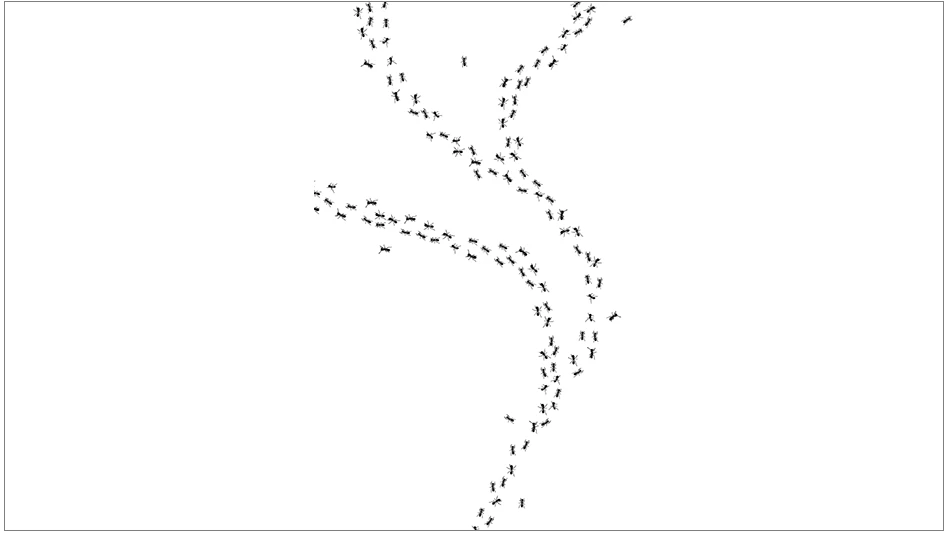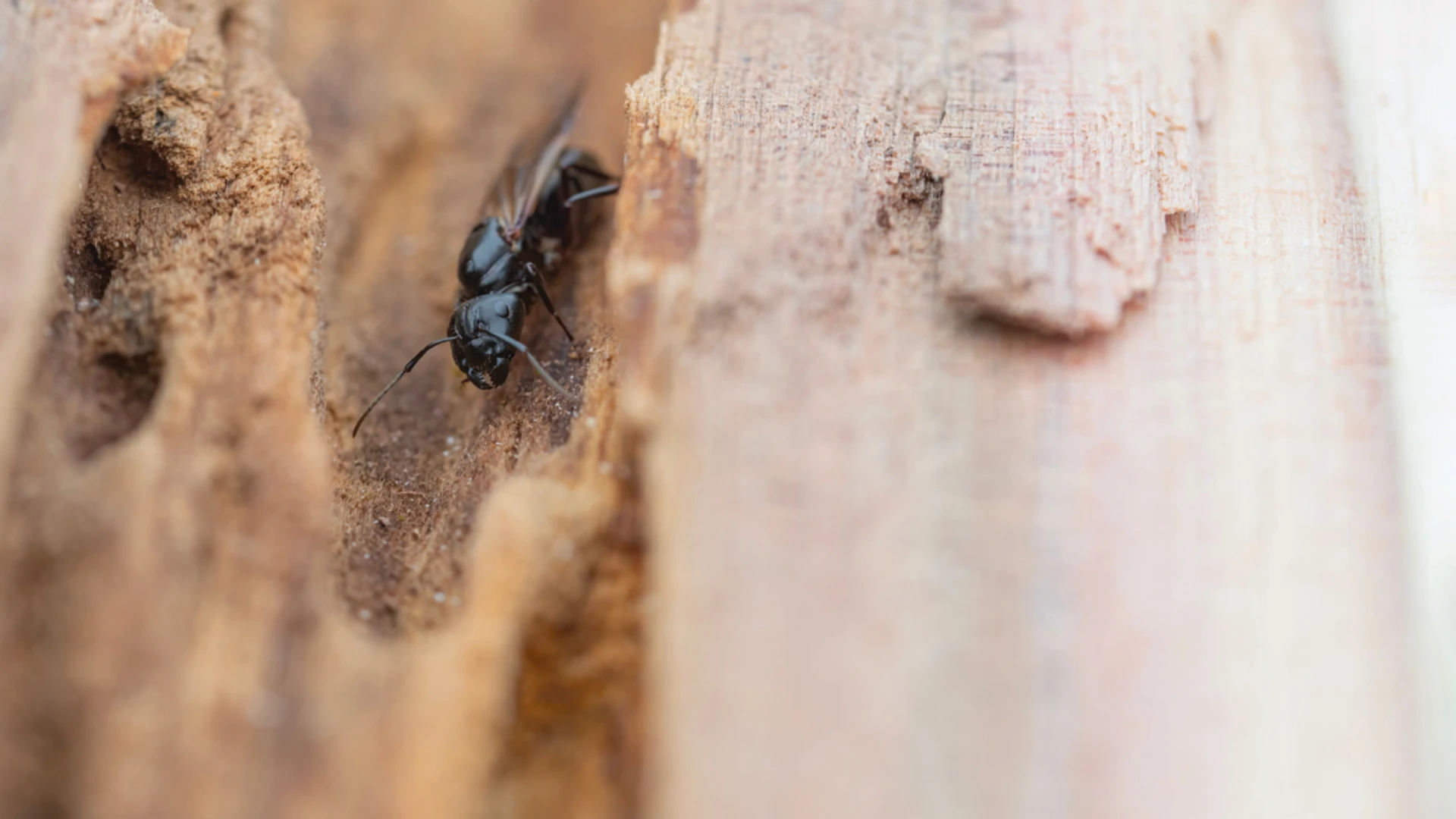"What was that I felt in the covers? Probably nothing. I will just go on to sleep." The next morning, you awake to find that your legs itch a little. When you scratch, you find some small bumps. Upon closer inspection, you notice that the bed sheets have some red spots on them. You have just had a withdrawal from the resident Cimex lectularius — a.k.a. the bed bug.
Once a rare find, bed bugs now have become more common again. There are several theories about why this insect has made an apparent comeback. The most widely accepted seems to be associated with international travel. In many countries, this insect was never "put to rest." With the frequency and ease of international travel, the bed bug was bound to reappear in the United States.
"In the past three years, I have received specimens or very reliable reports of true bed bugs in at least 64 separate infestations — in at least 27 states, the District of Columbia; Ontario, Nova Scotia, and Quebec provinces of Canada; Baja California; and Tamulipas states of Mexico," reports National Pest Management Association Staff Entomologist Dr. Harold Harlan. "In the past two years, bed bug infestations have been very well documented, and NPMA has helped with IDs and related advice in dormitories of at least seven different universities (four public, three private) in the United States and two (one public and one private) in Canada." (For a list of states where NPMA has identified bed bugs, see page 52.)
DEFINING CHARACTERISTICS. The common bed bug has some fairly distinct characteristics:
• The adult is around 3/16-inch (4 to 5 mm) long
• Flat and oval in shape
• Brown in color, changing to reddish after feeding
• Covered with short golden hairs
• Lacks full wings; only wing pads
• Emits an "obnoxious" smell
A bed bug’s life starts with an egg that is laid in cracks or crevices close to where the adult feeds. These eggs are cemented in place and there may be a great number of eggs in a small area. Studies have shown numbers of offspring can range from 200 to more than 500. The eggs hatch into nymphs. Each nymph will go through five instars, and will require a blood meal to pass through each molt. If a blood supply is not available, the nymphs will be patient. Some studies suggest that close to two months can pass without the nymph feeding, which can greatly increase the time required to pass into adulthood. The average life span of these insects, if all conditions such as temperature, relative humidity and food supply are good, can be just short of a year. Humans are the preferred source of the blood meal; but in our absence, they will readily feed on other animals, such as birds, bats, guinea pigs and several others. Although the bite is normally painless, most people do develop an allergic reaction to the saliva of the insect. This reaction produces swelling that may extend beyond the bite location. Bed bugs have been found to carry more than 25 different disease organisms. They are suspected by some to be able to spread some of these diseases to their host, but it has never been proven.
There are several closely related species that can be, and often are, confused with the bed bug. They include the bat bug (Cimex adjunctus and Cimex pilosellus), the swallow bug (Oeciaus vicaruis), the swift bug (Cimexopsis nyctalis) and others. Proper identification should always be made prior to a treatment strategy being put in place. As with many different insects, treating for the wrong pest can lead to many problems such as callbacks, unhappy customers and unproductive technicians.
"NPMA has also received specimens or reliable reports of more than 15 different infestations of Eastern Bat Bugs, Cimex adjunc-tus Barber, from at least nine different states (including Indiana, Illinois, Maryland, Michigan, Missouri, New Jersey, Ohio, Pennsylvania and Texas) and Washington, D.C.," Har-lan adds. "Specimens of swallow bugs (Oeciacus vicarious Horvath) have been received from at least three different infestations (all three from attics or eaves of public buildings) in California, Colorado and Wyoming."
BED BUG CONTROL. The control for these creatures can be difficult. Several good pesticide formulations are labeled for bed bug control and repellent and non-repellent dusts work well if placed into the proper harborage. Liquid residuals will also work, however some of them have drawbacks, such as water staining and exposure to non-target organisms. Since these little creatures like to live close to their food source, it is important to thoroughly inspect all areas where people might spend some time in a room.
Finding as many of the harborages as possible will go a long way towards getting control of an infestation while reducing the amount of pesticide used in the treatment. An inspection must include the removal of items on the walls where these insects like to hide. It may also be necessary to have the carpeting pulled up around the perimeter of the room. Often, we will find bed bugs hiding in the cracks and crevices at the floor wall junction. All pieces of furniture, sofas, chairs, recliners, etc., must be turned over and inspected. Of course, it should go without saying to check the mattress, box spring and bed support structures for signs of infestations. Do not forget to use your nose when checking for bed bugs. In many cases, the presence of bed bugs is signaled by the presence of a sweet odor. This odor has been described as "obnoxiously sweet." I liken the smell to that of soda pop syrup.
The problem with most treatment strategies is that they do not go far enough for this insect. Many operators make the mistake of only treating the infested room or area. Often the treatment will drive the insects into adjoining rooms or adjacent areas where they can subsequently re-infest. If all avenues into the room are not addressed, the bug can hitch a ride into other areas. In a hotel, housekeeping carts are often overlooked. The extra pieces of furniture are also not treated or considered as potential points of infestation.
Storage areas may also harbor these insects. As items are removed from rooms and placed into storage, bed bugs may find a new home. Remember, they can stay alive for a significant amount of time without a food source. When the items in storage are pulled out and placed back into a room, the insects can appear again.
Many pest management professionals have advised customers to discard anything that was infested with bed bugs. Some customers are opposed to discarding mattresses for the obvious financial impact that it can have. On the other hand, treating mattresses can be expensive to the pest management professional. Even though there are materials labeled for use on the mattress and box springs of a bed, there is always an issue of liability. If a mattress is treated and someone lies down on it and has a dermatological reaction of any type — even if it is only a reaction to a detergent or something other than the pesticide — the pest management professional could face a litigation issue. With this in mind, it is important to reduce the amount of pesticide used in human contact areas while still gaining control of bed bugs.
NEW IDEAS. The primary method of controlling bed bugs has always been to apply pesticides to the harborage areas. While some product labels permit this, pesticides should now be considered as a part of a true IPM solution. Minimal amounts of material can be used and still obtain and keep control of bed bugs. New alternative methods of control are available. Non-chemical approaches include the use of heat, the use of steam and there soon may be a growth regulator labeled for bed bugs.
Heat has been used in many situations for everything from stored product insects to termites. Some companies are finding that directed heat into the harborage area will effectively kill bed bugs. The heat lowers the relative humidity in the area as well as physically destroys the eggs, nymphs and adults. This method is completely non-chemical and may be good for sensitive areas, as well as customers concerned with pesticide use.
Growth regulators may be helpful once they are registered for bed bug treatments. The material should work to break the life cycle of the insect. This will certainly be a welcome addition to the arsenal.
Steam is the latest innovation for this creature. Steam machines that produce low vapor, high-temperature steam will kill all stages of life. But how long would such a treatment last? To find out, the author visited two hotels of equal quality that had infestations of bed bugs.
The first facility was treated with conventional techniques using dust material under the carpet at the floor/wall junction and in the wall voids. The mattresses were treated per the label directions with a liquid residual. After application, the mattresses were placed inside a mattress cover and sealed. The second hotel was treated with residual dust materials in the same fashion as the first. The mattress and box springs, however, were treated with a steam cleaner that produces a low vapor steam at 220ºF. After both facilities had been treated, they were monitored for recurrences. In both hotels the population crashed after 60 days. Within 90 days, we started getting call backs in the first hotel. The second hotel remained controlled for the duration of the monitored time, 12+ months.
CONCLUSION. In summary, steam was more effective than conventional applications or the control of bed bugs. The time required for control was less and the exposure to liability issues by the pest management professional can be minimized. Also, the customer was saved the expense of destroying mattresses and other furnishings. To verify the results, this general service approach has been repeated many times with equal success.
The author is a board certified entomologist and the national pest control technical manager for Orkin Technical Services, Atlanta, Ga. He can be reached via e-mail at fmeek@pctonline.com.

Explore the July 2003 Issue
Check out more from this issue and find your next story to read.
Latest from Pest Control Technology
- CAPMA Hosts 2025 Legislative Day in Sacramento
- Grizz Pest Management Bartends for a Cause
- Rose Pest Solutions Becomes Official Pest Provider of Chicago Fire FC
- WSPMA Hosts Legislative Day at Washington State Capitol
- A-1 Pest Control Marks 59 years in Business
- Hawaii PCO Shares Regulatory Challenges, Business Impacts from Lahaina Wildfires
- 5 Tips for Reducing Waste in the Office and in the Field
- OvoControl Now Available in Chile





